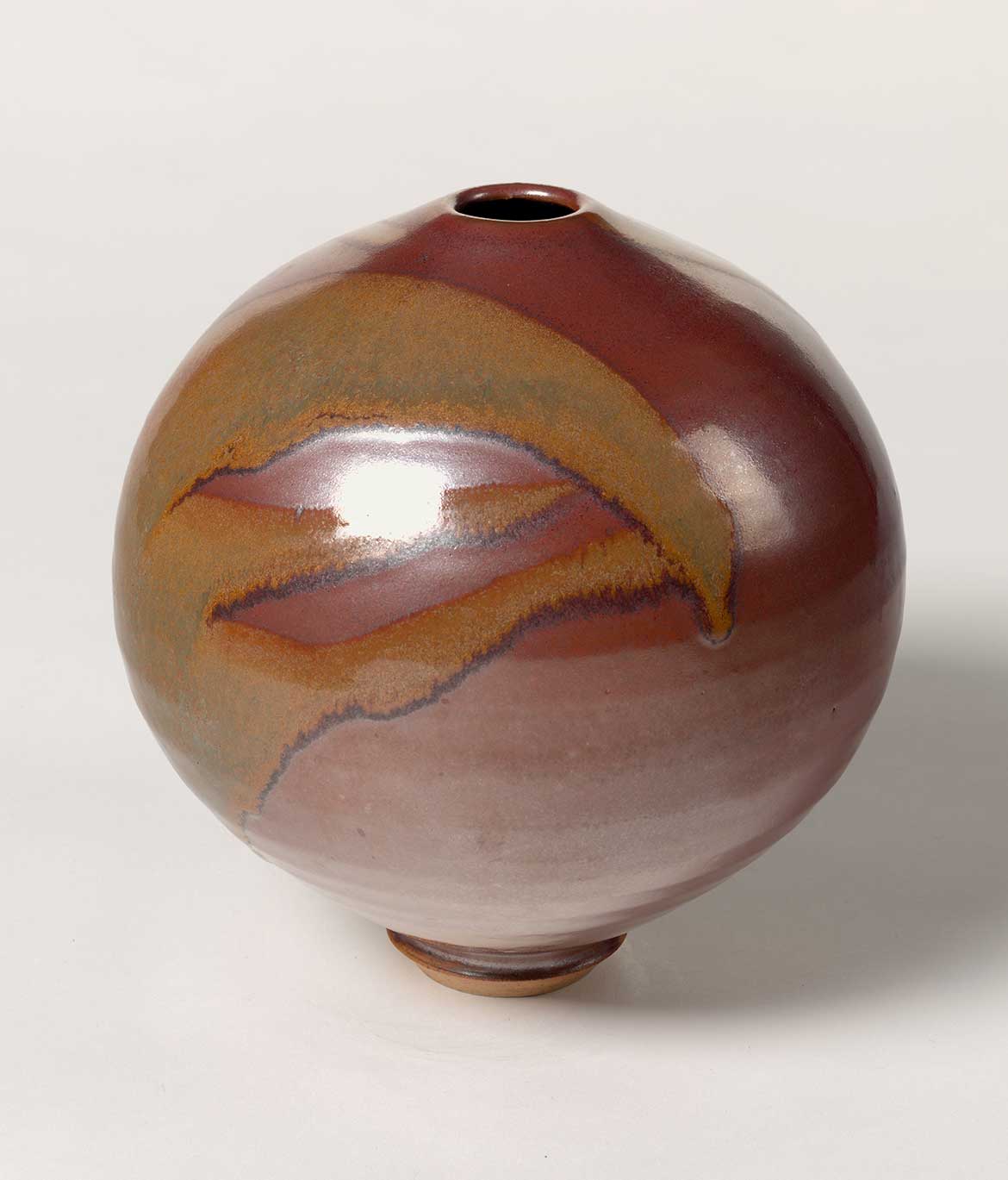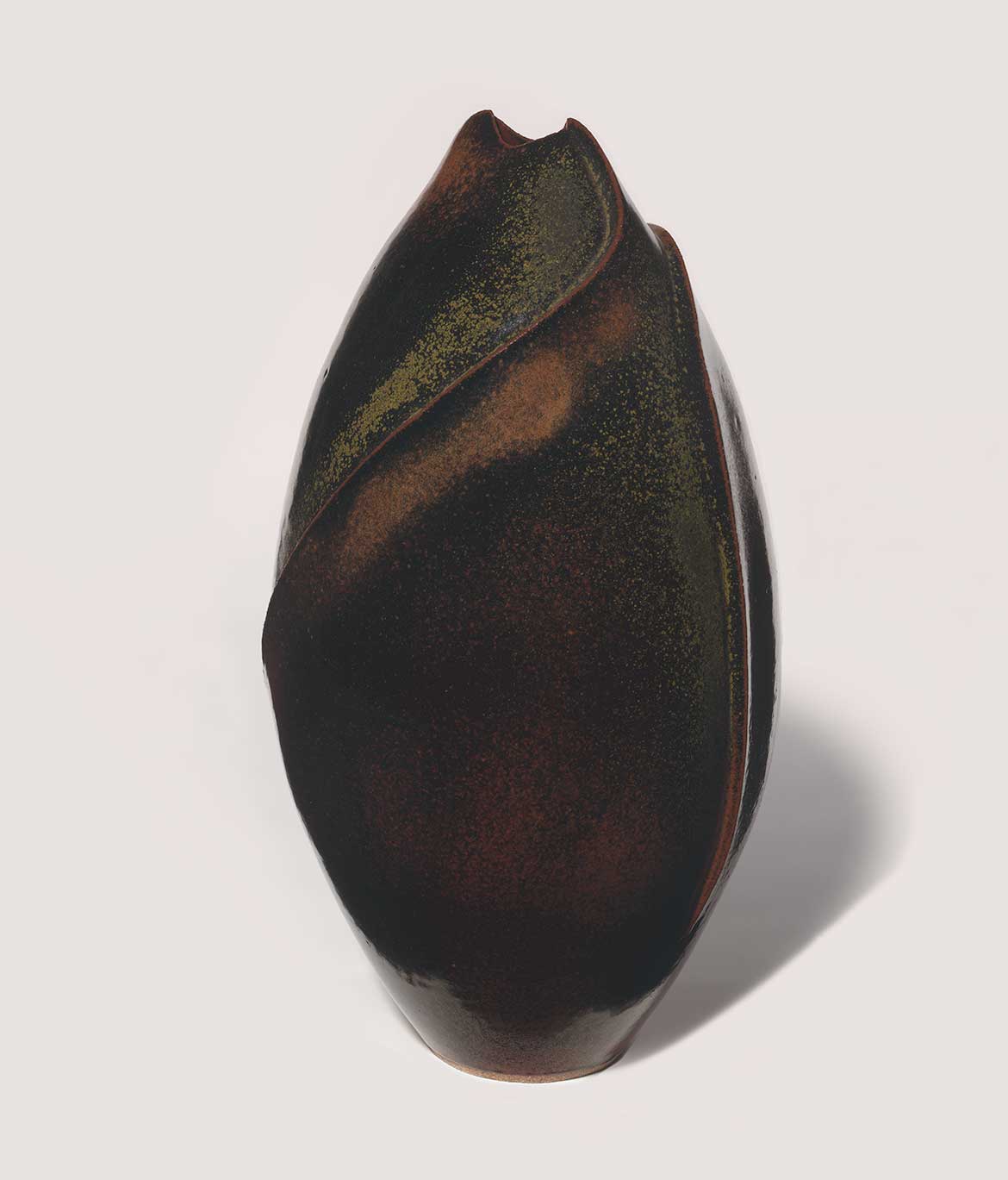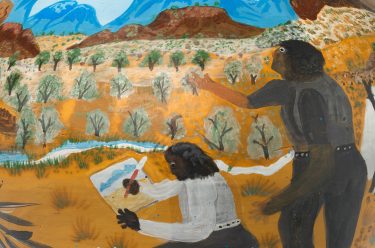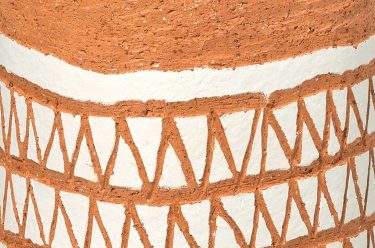Australian ceramic pieces dating from the 1960s to 1980 by six highly respected ceramic artists and teachers of the period are fine examples of the artists’ practices at influential periods of their careers. You can view a selection of QAGOMA’s ceramics in Gallery 3 at the Queensland Art Gallery.
Ivan Englund

In 1956, Ivan Englund (1915–2007) became one of the four founding members of the Potters Society of Australia. He taught art and ceramics in institutions in Canberra and across Victoria and New South Wales, and from 1972 to 1977, he conducted the Ivan Englund Pottery School at the Rocks in Sydney. His early work evolved under the influence of Japanese potter Shoji Hamada and his British follower, Bernard Leach. Englund’s work on glazes required extensive research, and he published two books on the subject, for which he received a doctorate from Wollongong University in 1995. Rosey morn no.1 c.1980, with its copper glaze, is an exceptional example of his innovative practice.
Peter Rushforth

Peter Rushforth (1920–2015) was a committed and inspiring teacher at the National Art School, Sydney, where he went on to lead the ceramics department. His pots commanded great respect from other potters and his students. His course became the most respected in the country; each year, more than 200 students would apply for one of only 18 available places. Rushforth believed that his students should first learn to make useful pots, which, for him, was the basis of the craft. Should a later interest in non‑functional or sculptural ceramics develop, the previously mastered techniques would stand the student in good stead. Drawn to Japanese ceramics and after direct contact with Japanese potters and traditions on a visit in 1963, Rushforth’s own works became freer and more spontaneous. (Blossom jar) c.1979 is a beautiful example. The upside-down firing creates a serendipitous effect.
Bernard Sahm

Bernard Sahm (1926–2011) studied painting and sculpture, and eventually ceramics, at the East Sydney Technical College from 1945 to 1952. In 1976, he was appointed to the role of Inaugural Head of Ceramics at the newly developed Sydney College of the Arts. Reviewing an exhibition of Sahm’s work, artist and art critic James Gleeson wrote of his ceramics: ‘His work is strong and elegant. He is a traditionalist but he is never dull or conventional’.1 Sahm’s pottery is marked by its impressive technical facility combined with a strong sense of vessel design. Flattened form 1975 is an impressive example, through the artist has explored a less utilitarian ceramic aesthetic, and concentrating on a powerful, flanged design.
Shigeo Shiga

Shigeo Shiga (1928–2011) was a distinguished potter in both Japan and Australia. From 1966–72, he taught at the East Sydney Technical College (now the National Art School), becoming known as Shiga-San to a generation of potters. Greatly influenced by the intensity of the Australian light and landscape, Shiga once stated that: ‘The climate, history and culture of each country are different, and have a strong effect on the work produced there’.2 Landscape pot c.1979 is a unique exceptionally large and spherical. This was one of the last large pots Shiga made, having received advice from his doctor that lifting such heavy pieces was detrimental to his heart.
Robert Forster

Queensland potter Robert Forster (b.1944) lectured in ceramics at the Queensland College of the Art from 1974–76. Of his exhibition at the Design Arts Centre, Brisbane, in 1977, Dr Gertrude Langer wrote:
So we have some sumptuous spheroids with a rich red iron glaze contrasted with ash glaze and clay slips, and among these a very large piece impresses with its excellent control, resulting in a lyrical effect . . .’.3
(Spherical pot) 1977 is an accomplished work that corresponds closely to Langer’s description, with its rich red iron and contrasting ash glaze.
Colin Browne

Colin Browne (b.1949) is a conceptual artist potter interested in the purity of basic shapes and form. In 1975, he set up a studio in Carlton, Victoria and taught with the Beaumaris Pottery Group, then at RMIT. His ovoid forms are appreciated for their sculptural qualities. Winter pot c.1979 has an organic presence, but is altered by its hard-edged ridge shapes. This biomorphism of abstract forms was an important and consistent theme in Australian art in the 1960s and 70s.
Michael Hawker is Associate Curator, Australian Art, QAGOMA
Endnotes
1 Peter Pinson and Guy Warren, ‘Bernard Sahm obituary’, Sydney Morning Herald, 28 March 2011.
2 Glenn Cooke, ‘Shigeo Shiga: Vase 1977’ (QAGOMA unpublished material).
3 Gertrude Langer, ‘Attractive display of stoneware’, Courier-Mail, Brisbane, 14 November 1977, page unknown.
Know Brisbane through the QAGOMA Collection / Delve into our Queensland Stories / Read more about Australian Art / Subscribe to QAGOMA YouTube to go behind-the-scenes
#QAGOMA


